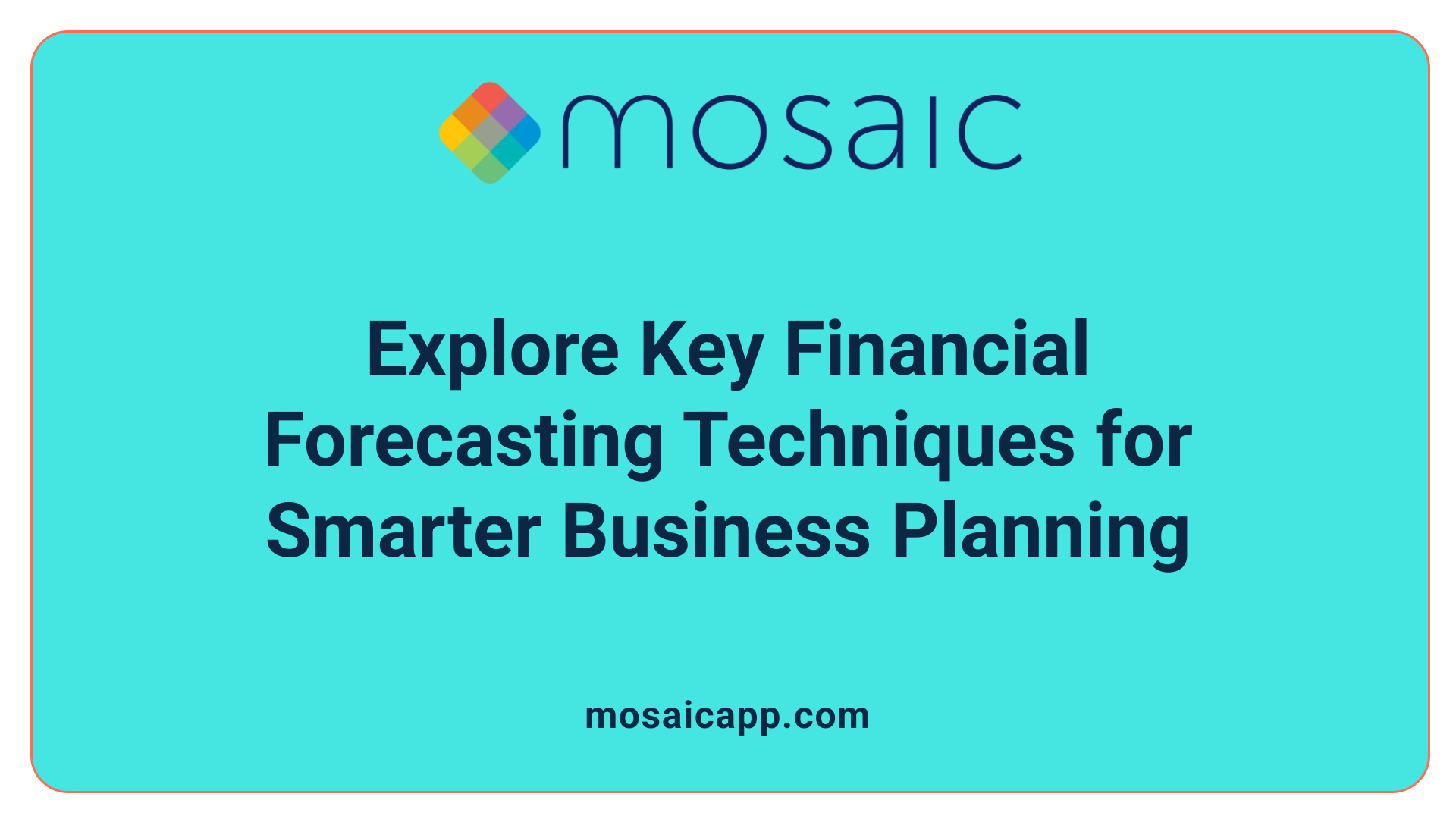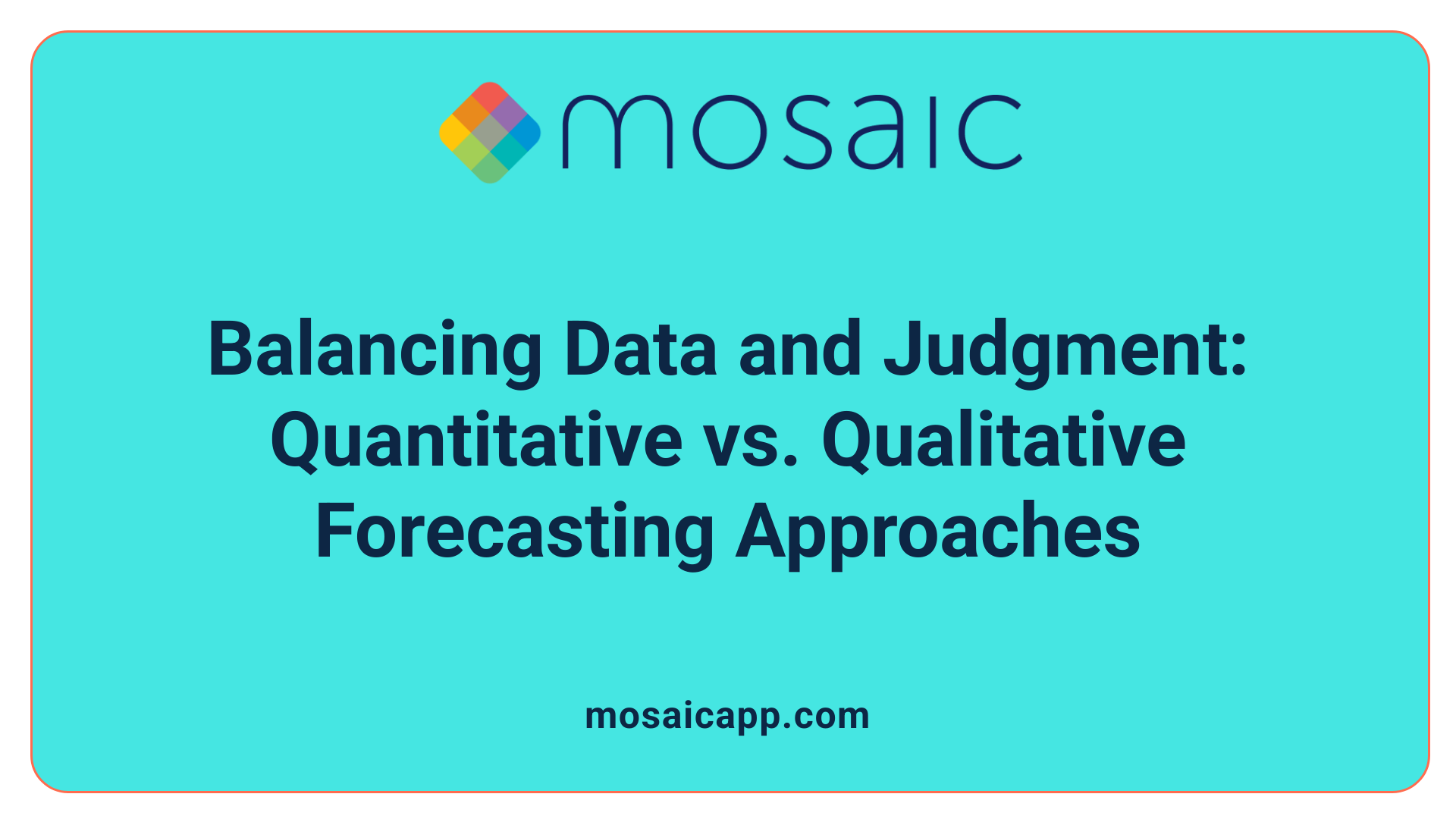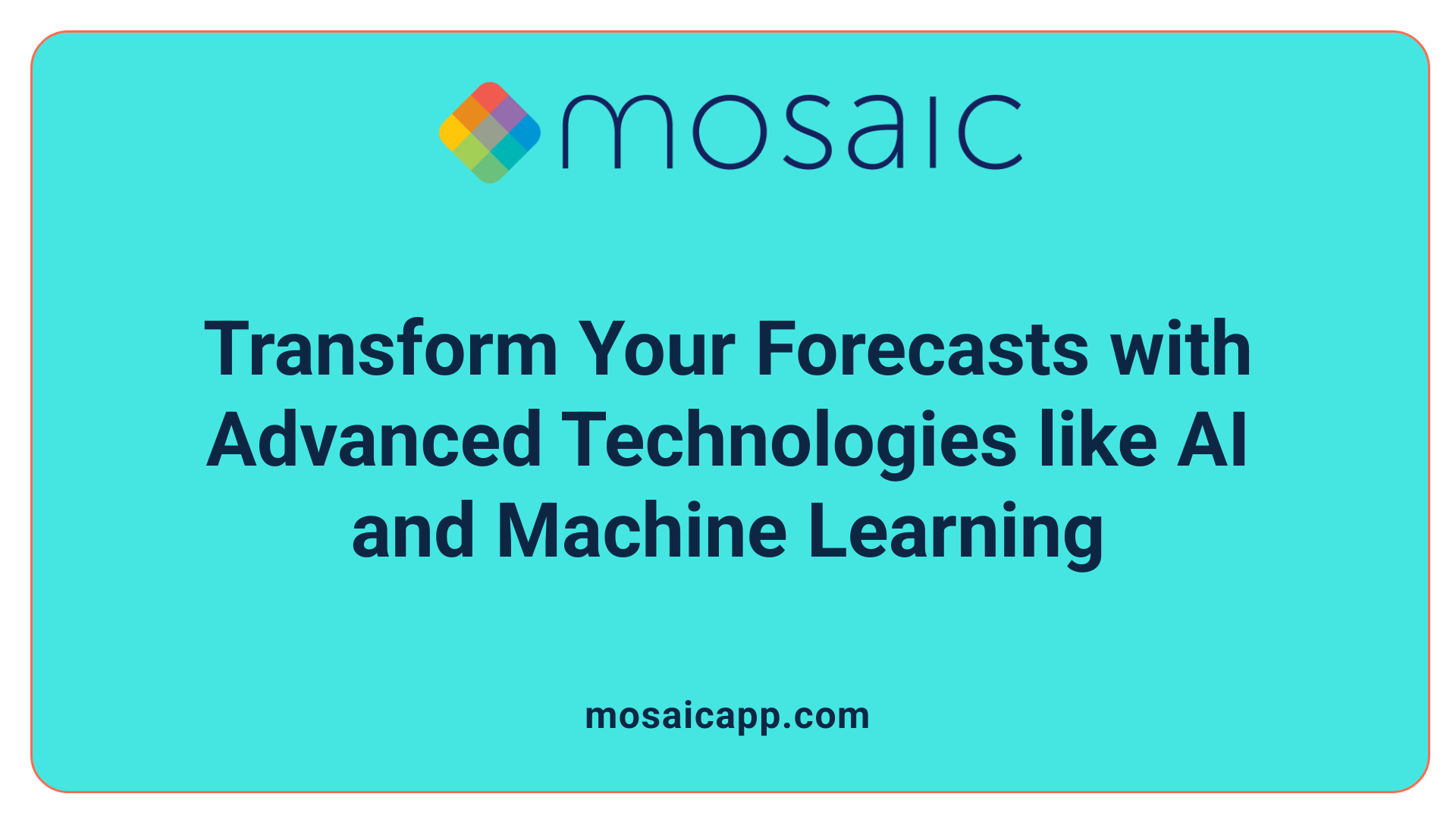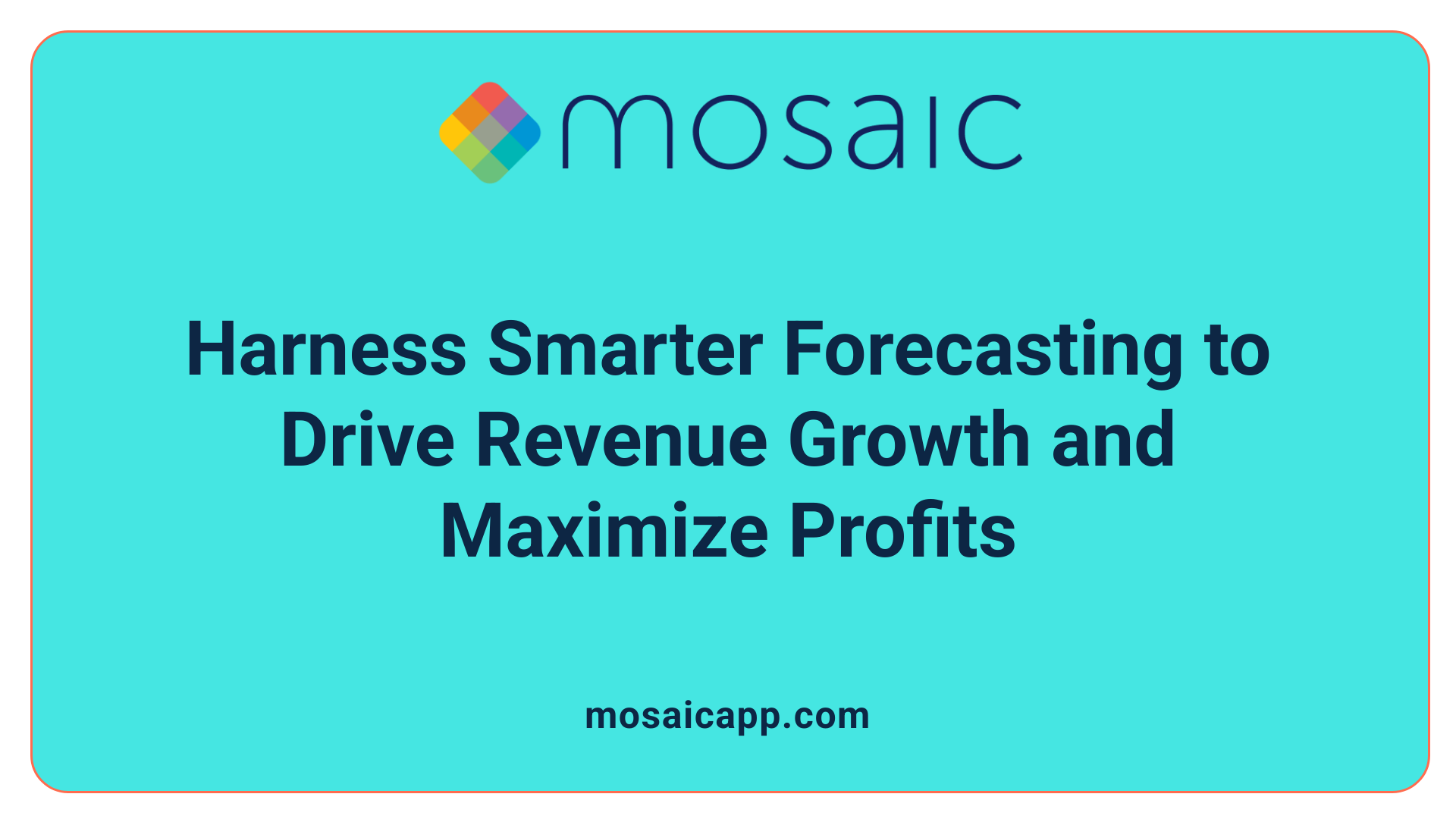Understanding the Foundation of Smarter Profitability Forecasting
In an increasingly competitive business environment, accurately predicting profitability outcomes is crucial for strategic success. Smarter forecasting leverages cutting-edge methods, combining historical data analysis, market insights, and advanced technology to generate precise predictions. This article explores how organizations can adopt smarter forecasting techniques to improve financial modeling, enhance decision-making, and ultimately, optimize profitability.
The Significance of Revenue and Profitability Forecasting

Why is accurate revenue forecasting important for better profitability management?
Forecasting revenue accurately is crucial because it forms the backbone of effective business planning and financial management. When companies can reliably estimate future income, they gain a clearer picture of their cash flow, allowing for smarter resource allocation. This includes decisions related to staffing, marketing, investments, and operational expenses.
Reliable revenue predictions help set realistic goals, avoid overextending financial commitments, and plan for seasonal fluctuations or market changes. They also foster confidence among investors, lenders, and other stakeholders, who rely on these forecasts to evaluate the company’s growth potential and stability.
Moreover, understanding future revenue streams enables managers to identify potential risks early. By adjusting strategies promptly, businesses can mitigate downturns or capitalize on emerging opportunities. This proactive approach to managing profitability helps ensure long-term sustainability and competitive advantage.
In essence, accurate revenue forecasting aligns financial expectations with operational strategies. It supports disciplined financial management, enhances decision-making quality, and ultimately contributes to stronger profitability outcomes.
Overview of Financial Forecasting Methods
 Financial forecasting is an essential process for businesses to anticipate future financial performance based on existing data and market conditions. There are several methods used to project different financial aspects, each with its own strengths and limitations.
Financial forecasting is an essential process for businesses to anticipate future financial performance based on existing data and market conditions. There are several methods used to project different financial aspects, each with its own strengths and limitations.
Among the most common are seven primary forecasting techniques. These include the percent of sales method, straight-line method, moving average, various regression analysis models, the Delphi method, and market research approaches. The percent of sales approach estimates future figures by applying a consistent percentage based on historical sales data. The straight-line method projects growth assuming a steady increase over time, while moving averages smooth out short-term fluctuations to reveal longer-term trends.
Regression techniques, including simple and multiple linear regression, analyze relationships between variables to improve forecast accuracy. Qualitative methods like the Delphi technique and market research rely on expert opinions and external insights, especially useful when historical data is limited.
Distinguishing between quantitative and qualitative approaches is crucial. Quantitative methods are data-driven, employing statistical analysis of past figures to predict the future. They are particularly effective when historical data is abundant and stable. Conversely, qualitative methods depend on subjective judgment, expert insights, and market trends, making them suitable during new product development or when data scarcity occurs.
Each method offers advantages but also faces limitations. Quantitative models can be overly dependent on historical stability and may overlook sudden market shifts. Conversely, qualitative methods, while flexible, can introduce biases and lack precision if not properly conducted.
A comprehensive forecasting strategy often combines multiple techniques. The integration of robust data analysis with expert insights ensures more reliable predictions, supporting better managerial decisions. Tools like financial management software—including platforms like NetSuite—enhance forecast accuracy through automation, real-time data integration, and analytical capabilities.
In summary, selecting the appropriate forecasting method depends on factors such as data availability, desired accuracy, timeframe, and specific business context. Employing a mix of quantitative and qualitative techniques, continually reviewing forecasts, and leveraging technology can significantly improve the quality and usefulness of financial projections.
The Role of Quantitative and Qualitative Methods

How do traditional forecasting approaches compare with smarter forecasting strategies for better financial outcomes?
Traditional forecasting methods rely heavily on statistical and historical data analysis. Techniques such as regression analysis, moving averages, and time series models examine past performance to predict future outcomes. These approaches are valued for their simplicity, transparency, and ease of interpretation, making them suitable for routine forecasting and when data is limited.
In contrast, smarter forecasting strategies leverage advanced technologies like machine learning algorithms, including neural networks, random forests, and support vector regression. These methods can handle complex, non-linear relationships and large volumes of data, capturing patterns that traditional models might overlook.
Machine learning models often deliver higher accuracy, especially when predicting in dynamic markets or with multifaceted datasets. They adapt quickly to new data, improve their predictions over time through training, and can incorporate diverse data sources such as social media sentiment, economic indicators, and customer feedback.
While traditional models excel in clarity and straightforwardness, smarter techniques prioritize precision and adaptability. The choice between them depends on the specific context, data availability, and the need for interpretability versus predictive power.
Ultimately, integrating these strategies can provide comprehensive insights, leading to better financial planning, resource allocation, and risk management. Smarter forecasting strategies, when appropriately applied, help organizations achieve more accurate predictions, resulting in improved financial outcomes.
Emerging Technologies in Smarter Forecasting
 Predictive analytics and machine learning are transforming traditional methods of financial forecasting by providing more accurate and insightful predictions. These technologies analyze vast amounts of historical data, market trends, and behavioral patterns to produce forecasts for revenues, expenses, and cash flows. This helps companies make smarter strategic decisions, optimize pricing strategies, and better manage resources.
Predictive analytics and machine learning are transforming traditional methods of financial forecasting by providing more accurate and insightful predictions. These technologies analyze vast amounts of historical data, market trends, and behavioral patterns to produce forecasts for revenues, expenses, and cash flows. This helps companies make smarter strategic decisions, optimize pricing strategies, and better manage resources.
Real-time data processing is another game-changer in financial forecasting. It allows businesses to update their forecasts instantly as new information becomes available. This agility enables companies to respond swiftly to market changes, mitigate risks early, and seize emerging opportunities. Having up-to-date forecasts also supports smoother cash flow management and more precise budgeting.
Automation and system integration further enhance forecasting accuracy and efficiency. Automated workflows facilitate consistent data collection, reduce manual entry errors, and generate dashboards that display live financial insights. Integrated systems connect sales, accounting, and operations data, providing a comprehensive view of financial health. This integration streamlines the forecasting process, making it faster and more reliable.
How can advanced forecasting tools such as predictive analytics improve profitability outcomes?
Advanced tools like predictive analytics elevate profitability by enabling more precise financial predictions and risk management. They identify potential revenue streams, optimize costs, and uncover inefficiencies before they impact the bottom line. Being able to anticipate market shifts and customer needs helps companies adjust their strategies proactively, leading to higher margins and sustainable growth. Overall, these emerging technologies empower organizations to make data-driven decisions with confidence, directly boosting profitability.
Software Solutions Enhancing Forecast Accuracy
 To boost the precision of revenue and profitability forecasts, businesses increasingly turn to specialized software tools. Solutions like Fathom, Cube, and CloudZero are designed to provide detailed insights, automation, and flexible analysis features.
To boost the precision of revenue and profitability forecasts, businesses increasingly turn to specialized software tools. Solutions like Fathom, Cube, and CloudZero are designed to provide detailed insights, automation, and flexible analysis features.
Fathom offers comprehensive financial reporting, including cash flow projections and KPI visualization. It integrates smoothly with popular accounting platforms, allowing for real-time data analysis and performance tracking. Cube's platform, built within familiar spreadsheets like Excel and Google Sheets, supports quick scenario testing, data consolidation, and automation, making it ideal for agile planning.
CloudZero specializes in cloud cost forecasting, helping organizations measure current cloud expenses, understand unit economics, and predict future cloud costs with high accuracy. This is particularly valuable for environments heavily reliant on cloud infrastructure.
Beyond these, advanced enterprise planning tools such as Vena, Anaplan, and IBM Planning Analytics combine financial and operational data. These platforms facilitate detailed scenario analysis, risk assessment, and strategic planning, driving better decision-making.
Key features of these solutions include real-time insights, scenario analysis, and granular cost tracking. Automation and system integration enable scalability, making them adaptable to organizations of various sizes.
Using these tools, companies can anticipate financial outcomes more accurately, adjust plans swiftly in response to changing conditions, and ultimately make more informed decisions that support growth and stability.
Leveraging Smarter Forecasting for Better Profitability

How can smarter forecasting techniques improve profitability outcomes?
Advanced forecasting methods can substantially boost a company's bottom line by delivering more accurate and trustworthy financial projections. Techniques like predictive analytics, scenario planning, and driver-based models integrate diverse data sources—such as past sales figures, market movements, and socioeconomic trends—to generate comprehensive insights.
These approaches help businesses make smarter choices about where to allocate resources, how to set prices, and when to ramp up or scale back operations. For instance, by understanding upcoming market shifts, a company can adjust its pricing strategy to maximize revenue or cut costs before issues become critical.
Automation plays a critical role in refining forecasts. Modern financial management software automates data collection, analysis, and reforecasting, which enhances the accuracy of predictions and allows for regular updates in response to changing conditions. This continuous refinement helps identify potential risks early and spot new opportunities swiftly.
Implementing such sophisticated forecasting tools contributes to better risk management and enables a proactive approach. It helps organizations avoid costly mistakes, optimize profit margins, and achieve long-term sustainability.
In summary, smarter forecasting—by combining advanced models with automation—equips decision-makers with critical insights about future performance. This comprehensive understanding supports strategic actions that increase revenues, control costs, and ultimately, improve profitability.
| Forecasting Technique | Main Benefit | Suitable For |
|---|---|---|
| Predictive Analytics | Incorporates multiple variables for comprehensive view | Complex market environments, high data availability |
| Scenario Planning | Prepares for various future states | Strategic planning, risk management |
| Driver-Based Forecasting | Focuses on key business drivers for accuracy | Businesses with clear operational correlations |
| Automation and Real-Time Data | Enhances accuracy and responsiveness | Rapid-changing markets, ongoing operational adjustments |
| Continuous Reforecasting | Maintains forecast relevance in dynamic conditions | Businesses needing frequent updates for decision-making |
Utilizing these methods positions companies to be more adaptive, resilient, and profitable in competitive landscapes.
The Role of Advanced Tools in Profitability Enhancement
How can advanced forecasting tools such as predictive analytics improve profitability outcomes?
Advanced forecasting tools, especially predictive analytics, play a crucial role in improving a company’s profitability. These tools analyze complex historical data, market trends, and real-time information to generate more accurate financial forecasts.
By providing reliable insights into future revenue, expenses, and cash flow, predictive analytics enable better strategic decision-making. Businesses can dynamically adjust pricing, optimize resource allocation, and improve operational efficiency through automation features like real-time dashboards and cost tracking.
In addition, these tools help identify potential risks early by detecting anomalies and conducting scenario analyses. This proactive approach allows companies to mitigate issues before they impact profit margins.
Furthermore, advanced analytics support scenario planning and decision support by modeling different market conditions and operational strategies. This flexibility helps businesses adapt swiftly to market fluctuations, control costs, and exploit new opportunities.
Overall, integrating predictive analytics into financial planning allows companies to stay responsive and agile, effectively boosting profitability and competitive advantage.
Contributions of technological tools to operational efficiency, dynamic adjustments, scenario analysis, and market adaptation
| Aspect | Contribution | Explanation |
|---|---|---|
| Operational Efficiency | Automation and real-time data | Streamlines processes, reduces manual effort, and provides instant updates |
| Dynamic Adjustments | Flexible forecasting models | Enables quick recalibration of strategies based on latest data |
| Scenario Analysis | Simulation of different conditions | Facilitates strategic planning and risk mitigation |
| Market Fluctuations | Continuous monitoring and alerts | Allows rapid response to external market changes |
How do advanced tools facilitate scenario analysis and market adaptation?
Scenario analysis using advanced tools involves creating various models to forecast possible future states under different assumptions. Businesses can evaluate the impact of market shifts, economic downturns, or competitive actions.
These tools can simulate different scenarios, providing insights into potential outcomes and helping management make informed decisions. For example, they can assess how new pricing strategies might affect profitability or how supply chain disruptions could impact expenses.
Market adaptation is further supported by real-time analytics that monitor external conditions, allowing companies to quickly pivot their strategies in response to changing customer preferences, regulatory environments, or macroeconomic trends.
Through scenario planning and continuous market monitoring, organizations can stay resilient, competitive, and profitable in an increasingly dynamic business landscape.
Conclusion: Embracing the Future of Financial Forecasting
 In today's rapidly changing business landscape, adopting smarter financial forecasting methods is vital for maintaining a competitive edge. These approaches, which combine quantitative techniques such as regression analysis and time series models with qualitative insights like market research and expert opinions, lead to more accurate and robust predictions.
In today's rapidly changing business landscape, adopting smarter financial forecasting methods is vital for maintaining a competitive edge. These approaches, which combine quantitative techniques such as regression analysis and time series models with qualitative insights like market research and expert opinions, lead to more accurate and robust predictions.
Smarter forecasting provides significant benefits, including improved accuracy in projecting revenues and profitability. This accuracy allows organizations to make well-informed decisions, plan resources effectively, and identify potential risks or opportunities early. Enhanced models support better cash flow management and liquidity planning—critical components for a company's stability and growth.
Automation and real-time data integration, supported by advanced software solutions like NetSuite or Oracle Fusion, further elevate forecast precision and efficiency. These tools reduce manual errors, speed up the forecasting process, and enable organizations to respond swiftly to market shifts.
Strategic forecasting is no longer just a financial necessity; it is a strategic tool that empowers organizations to navigate uncertainties, optimize operations, and achieve sustainable growth. The future of financial forecasting lies in leveraging innovative techniques, embracing technology, and integrating managerial expertise into the process.
It is essential for business leaders to actively adopt and adapt these advanced methods. Doing so not only enhances the accuracy of forecasts but also strengthens overall resilience and profitability. Staying ahead in an unpredictable environment requires dedicated effort towards smarter, data-driven forecasts that support informed decision-making and long-term success.
Shaping the Future of Financial Forecasting
Incorporating smarter forecasting techniques into financial planning is not just a trend but a strategic imper ative. Leveraging advanced methods such as predictive analytics, scenario analysis, and real-time data integration enables companies to achieve higher accuracy, greater agility, and sustained profitability. As digital transformation continues to evolve, organizations that adopt these innovative approaches will be better positioned to predict market shifts, optimize resource deployment, and make informed decisions that drive long-term success. Embracing the future of financial forecasting empowers businesses to stay competitive, resilient, and profitable in an ever-changing economic landscape.
References
- 7 Financial Forecasting Methods to Predict Business ...
- Profitability Forecasts: What They Are and How to Create ...
- How to Forecast Revenue and Stay Profitable
- How to Choose the Right Forecasting Technique
- Top Revenue Forecasting Models: The Ultimate Guide
- Revenue Forecasting Explained
- The Ultimate Guide To Profitability Models For Forecasting


